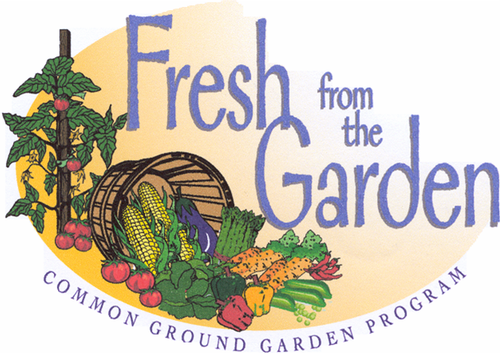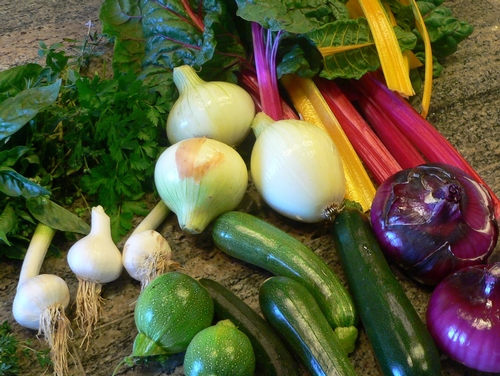Posts Tagged: gardening
Victory Gardens: Join the garden revolution
Rose Hayden-Smith, Ventura County Cooperative Extension director and U.S. historian is passionate about the power and possibilities inherent in gardening. She uses her extensive knowledge of homefront war efforts to help influence public policy in regards to local food systems.
Earlier this year Dr. Hayden-Smith gave a lecture, Victory Gardens: Join the Garden Revolution, at the San Diego Natural History Museum about this topic.
More about the lecture.
At no point in our lifetimes has the interest in gardening, urban agriculture, and local food systems been so intense. It’s coming from all fronts—economic need, challenges presented by climate change, community-development needs, health and nutrition, food security, reconnecting youth with land, changing understandings of how we use space in urban areas, and a growing desire of Americans for civic engagement and participatory democracy. The past has the ability to inform the present. Review historical case studies, learn about current national policies and models, and discover the future work needed to sustain the Victory Garden model as part of the overall local food movement. Also, learn about urban agriculture and how the local food-systems movement is addressing a wide range of challenges facing Americans today.
The presentation has been archived on our website. The presentation begins approximately six minutes into the video. In addition to the inspiring message, many sources for further reading and a way to connect to the movement are available towards the end.
Learn more about victory and community gardens on Ventura County Cooperative Extension's previous related posts.
UC revives “Fresh from the Garden” materials
“Fresh from the Garden” is a “vegetable education” program that was created several years ago by retired LA County Cooperative Extension employee and registered dietitian Susan Giordano. Giordano created lessons to reach home gardeners and their families living with limited resources. The lessons are designed to increase gardeners' knowledge of healthful eating habits, while emphasizing the health benefits associated with a vegetable-rich diet. The lessons also encourage gardeners to grow a greater variety of vegetables, more nutrient-dense vegetables, to cultivate vegetable crops throughout the year, and to prepare their harvest using delicious, nutritious recipes. In recent months, the lessons have been given a makeover and updated to reflect current dietary recommendations.
Bringing nutrition education into the garden
The LA County Food Stamp Nutrition Education Program (FSNEP) is partnering with UC Master Gardener volunteers this summer to pilot the revamped lessons in the garden. A group of enthusiastic Master Gardeners with an interest in nutrition education attended a “Fresh from the Garden” training on July 10. They are now equipped to take what they learned and bring it into the low-income community and school gardens where they volunteer. Our FSNEP staff members, armed with supplemental nutrition information, plan to provide additional support and expertise along the way. This is a natural fit for UC Master Gardeners who are already teaching low-income communities how to grow their own food, and UC FSNEP staff, who are providing valuable nutrition education to food stamp-eligible families. The families who benefit from these lessons will gain the knowledge and confidence they need to enjoy delicious and nutritious vegetables fresh from the garden!
“Fresh from the Garden” tips for the gardener
This time of year, gardeners are benefiting from the fruits of their labor, however, some might be overwhelmed by the sheer volume of vegetables being produced by their gardens. What to do with it all? Below is a “Fresh from the Garden” recipe for a simple summer veggie pasta sauce. Any vegetable can be substituted, and the pasta sauce can conveniently be frozen for later use.
Summer veggie pasta sauce
|
3 – 4 large tomatoes, chopped |
1 medium small onion, chopped |
|
3 cloves garlic, crushed |
1/4—1/2 cup chopped fresh basil |
|
2 medium zucchini, chopped |
2 Tablespoons oil |
|
1 small eggplant, chopped |
Salt and black pepper to taste |
|
1 medium green pepper, chopped |
|
Heat oil in a large pan over medium heat. Add onion, green pepper and garlic. Cook for 3 to 4 minutes, stirring often. Add the zucchini and eggplant. Cook for 5 minutes.
Add the tomatoes and basil. Simmer for about 20 minutes over low heat, uncovered, until slightly thick. Add salt and pepper to taste.
This recipe can be doubled or tripled and frozen in individual or family size servings. If it is not moist enough, just add water.
Interested in accessing “Fresh from the Garden” Resources? The lessons, handouts and recipes are now available on LA County's Cooperative Extension website.
For more information about “Fresh from the Garden,” please contact Los Angeles County nutrition, family & consumer sciences advisor Brenda Roche at bkroche@ucdavis.edu, (323) 260-3299.
It's blackberry and boysenberry pickin' time
Blackberries and boysenberries are amazing fruits. The fleeting fruit bearing nature of these productive plants are to be truly appreciated by pie and jam connoisseurs alike. Berries are a very low glycemic index foods (low in sugar) and a great treat for nutritionally conscious eaters.
Every gardener can enjoy and/or hate a productive berry plant. The fruit production is confined to a very short season but the plant can take on enormous proportions if left unchecked. One must be ever diligent to keep the berry plants confined to the planting row and kept trellised to avoid the “overgrown” berry heap in the backyard. Nonetheless, if a person has a place in the sun for a four-foot-wide row of berries, the rewards are terrific.
One can even plant them on south facing wal
l as long as you can put up a sturdy supporting trellis. If you live in a very hot summer climate, it may pay to cover your berry plants with a shade cloth, especially during ripening.From one plant you can harvest enough berries for a batch of delicious jam, or a luscious pie, some fruit for breakfast and, my favorite, blackberry popsicles (recipe to follow). After harvest, cut the berry canes that have already produced fruit back to the ground and trellis up those new canes growing up from the bottom. If you do that on an annual basis, you will keep the plants under control.
There are many varieties of berries and planting several with varying ripening periods spreads the harvest out over a longer time. Many varieties have a unique flavor, different from the “wild blackberry” that you may remember from the plant growing in the ditch. Some are thornless and easier to manage and others are quite thorny but the flavor is to die for.
Berries are divided into two groups: the trailing blackberries and erect blackberries. Trailing blackberries such as Boysen and Ollalie are popular varieties that are just now becoming ripe in Northern California. I have also been growing three of the erect cultivars that require a quite tall trellis - upwards of six to seven feet. But the fruit on these types are very large, and beautiful and the plants are vigorous and disease resistant. The varieties are “Black Satin," “Triple Crown” and “Cherokee.” These varieties will become ripe in another couple of weeks.
For more information on growing blackberries in your garden, visit the California Gardening website.
While you can use the berries in many ways, one that is truly a delight is to make blackberry popsicles. Here is the recipe:
Start by making a simple syrup by heating 2/3 cup of water to boiling, pour in 2/3 cup of white cane sugar and stir until dissolved. Remove from heat and allow to cool. Put three cups of washed fresh berries into a bowl and mash. You may want to strain out the seeds by pushing the fruit through a strainer, but you don’t need to. Blend with the cooled simple syrup. (You can also just put the berries into a blender with 2/3 cup of simple syrup.)
Pour the mixture into your popsicle mold and freeze for 3 to 4 hours. Insert the popsicle sticks and freeze 3 to 4 hours more. When frozen solid, take a popsicle in hand, mosey your way out to the garden, sit in a lounge chair in the shade and lick your troubles away.
Eat your vegetables
Californians can take advantage of our abundant sunshine and temperate climate in order to grow fruit and vegetables they can truly call their own. Gardening has some very obvious rewards, giving gardeners the freshest fruits, vegetables and herbs possible. If you are a cook, adding a garden to your backyard will pay dividends all year long.
In order to get the greatest benefit of this fantastic produce, make sure you tailor your garden to your own needs. No reason to raise a beautiful crop of broccoli or swiss chard if your family won't eat it! Tomatillos may be seen as specialty crop for some, but an important part of the garden for others. Plant what you will eat, so you will eat what you plant.
As well as growing crops you will eat, think of the potential for storage for your produce. Handled correctly, both onions and garlic are receptive to long term storage. Tomatoes can be canned, herbs can be dried. Other crops like cantaloupe, honeydew, zucchini and corn are best eaten fresh. Plan your garden accordingly.
Getting your hands dirty in the garden is great- but at the end of the day, you need to eat. Cooking a fantastic dish starts with great ingredients. When those ingredients come from your own garden, things just seem to taste a bit better.
Roasted Chicken and Onions (A good way to use a lot of onions!)
6-8 chicken thighs. Bone-in, skin removed.
4 large onions yellow or red - sliced 1/4-1/2" wide
3 garlic cloves - minced
2 tablespoons olive oil
2 teaspoons salt
1/2 teaspoon pepper
1 tablespoon paprika
The following herbs to taste - recommend approximately 1/3 cup of combined chopped herbs, pick what is fresh and available in your garden.
Rosemary
Oregano
Parsley
Directions:
- Preheat oven to 450 degrees.
- Dust chicken with paprika
- In a roasting pan, casserole dish or dutch oven toss all ingredients in order to coat chicken and onions with oil and herbs
- Bake dish uncovered for 25 minutes, toss all ingredients again, and bake until done- approximately 25 minutes more. Ensure juices run clear when chicken is pierced with knife or fork.
New gardeners cultivated throughout Los Angeles County
Gardening has become very popular lately, particularly in growing fruits and vegetables, and largely due to the need to lower grocery bills and eat healthy during this recession. But for beginners, gardening can sometimes seem intimidating and bewildering due to the multitude of variables involved, such as soil fertility, pest management, seasonal plants, composting, to name a few. Well, UC Cooperative Extension’s “Grow LA Victory Garden Initiative” in Los Angeles helped demystify gardening for many residents, using UC research-based information.
Master Gardener volunteers organized and led low-cost gardening courses to teach the basics of gardening to 297 students. Thirteen classes were held in March, April and May at 10 different sites throughout the county, from Tarzana to Echo Park. Each site accommodated about 30 participants who wanted to turn their new interest in gardening into successful, productive gardens in their backyards, community gardens and patios. Overall, participants walked away very pleased with the classes, and many felt that their gardening knowledge improved significantly.
“My husband and I just want to say thank you for a really wonderful four-session course. It was the perfect amount of information for beginner gardeners like us,” said a participant at the Milagro-Allegro Community Garden site in Highland Park, California.
So, what’s next? Cooperative Extension hopes to host another round of classes in Fall 2010. The hands-on experience was very successful, leaving many to inquire about future classes. For information, please contact Yvonne Savio, Common Ground program manager, at (323) 260-3407, ydsavio@ucdavis.edu.

New gardeners learn the basics.












